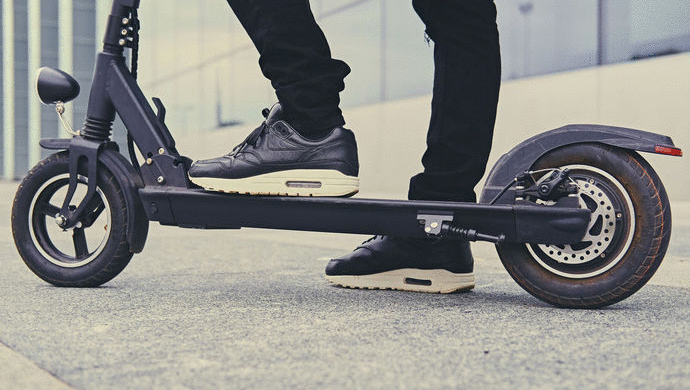Electric scooters are a global phenomenon. In practically any city, on a nice day, you can find people zipping about on an electric scooter. Their rise in popularity is partially due to growing environmental concerns. They are also in demand, however, because they are the perfect option for when your destination is too far to walk, public transit is too slow, and a car or taxi too expensive.
If you live in a city, it is likely that you have seen a street corner station filled with scooters from various apps like Uber and Lyft. These scooters are easy to rent, but if you use them consistently, purchasing your own might be a good investment. While every country has its own set of guidelines, there are common laws for electric scooters.
In this article, we will break down what some of those concerns are and how they relate to the features of different scooters offer. Ultimately, you should pick a scooter that will meet your needs and the regulations of your town. Read on to know about electric scooter laws:
Where can you ride?
Electric scooters work on a variety of terrains. Your local municipality, however, likely has regulations on where electric scooters should operate. There are three potential places where you can ride electric scooter: the sidewalk, bike lanes, or the road.
In order to ride on the sidewalk, the regulations must consider the scooter a pedestrian-vehicle. Though electric scooters are all mechanized, some governments believe they are small enough and slow enough to be considered pedestrian operated (instead of driver-operated). As oxymoronic as the term pedestrian-vehicle may sound, it is an important one to know if you intend on riding your scooter on the sidewalk because pedestrian-vehicles are often the only ones allowed on sidewalks.
Thus, it is worth figuring out what size an electricity-powered vehicle can be before your local laws forbid its use on the sidewalk. Sometimes, laws are written not about the size of the machine but of the motor.
The larger the motor, the faster the scooter generally is. So, if you would like to travel more than about ten miles an hour, you will likely end up with a scooter that has a bigger motor. Whether because of the scooter’s motor or another bit of legislation that prevents you from using the sidewalk, bike lanes and the road might be your best legal option for where to ride.
Bike lanes are by far the easiest to navigate in terms of regulations. Generally, they do not have a strict speed limit and their terms of use are pretty straight forward. Bike lanes, however, are not always around. If you are forbidden from using scooters on the sidewalk that means you must use the road and abide by the traffic laws that govern your area. This includes, but is not limited to, following the speed limit.
How fast can you go?
Most commuter scooters can go between 25-30 miles per hour. This means that while cruising around business areas, you are probably able to follow that requirement easily. The only complication arises if you live somewhere hilly. Cars have large motors that make it simple to go 30mph on flat or inclined roads.
Electric scooters, however, are not all equipped to handle hills. If you anticipate riding at an incline on the road, look specifically for models that will be best able to meet that need. There are also so tricks you as the rider can try to help your little scooter up, but your best bet is finding a scooter with more power.
Your size will also dictate your speed and thus the amount of power you need. Every scooter has a weight range. If you weigh under or over that range, your scooter will not function as described. Taller/bigger people who have to abide by a speed limit might require more power than some more simple models can provide. Many scooters have a load limit in the 200-250 pound range but more advanced models can carry up to 500 lbs.
What features do you need
If you ride on the road, you might need to register your scooter and/or ensure it has lights. These requirements can narrow down your options so it is essential to check where you need to ride your scooter before purchasing one.
Lights are a good safety feature regardless. They help you see, but more importantly, make sure others can see you. If you plan to ride on the street at all at night, lights are vital and may be required. Some models only have front-facing lights. These are good, and certainly better than nothing on the road, but rear-break lights and reflectors make you even more visible and thus safer. Check your local regulations to see what you need, but consider lights for safety reasons even if they aren’t required
Different models all have different features that can help you abide by local regulations. Not all scooters have speedometers, for example, which are essential if you need to follow strict speed limits. There are a number of other factors to consider, like battery life, if your scooter can fold, anti-theft devices, etc. that might influence your decision as well, but make sure that whatever you pick has the specs to operate legally in your area.
Electric scooters are a fun, modern way to maneuver in a city. They can be great for short trips around town. If you plan to invest in a scooter, check your local laws to see what might be required of you. There are tons of good options no matter what you need. Before you buy anything though, make sure you’ll be able to use it in the way you want.
Happy riding!


2 thoughts on “Electric Scooter Laws Around the World: A Guide”